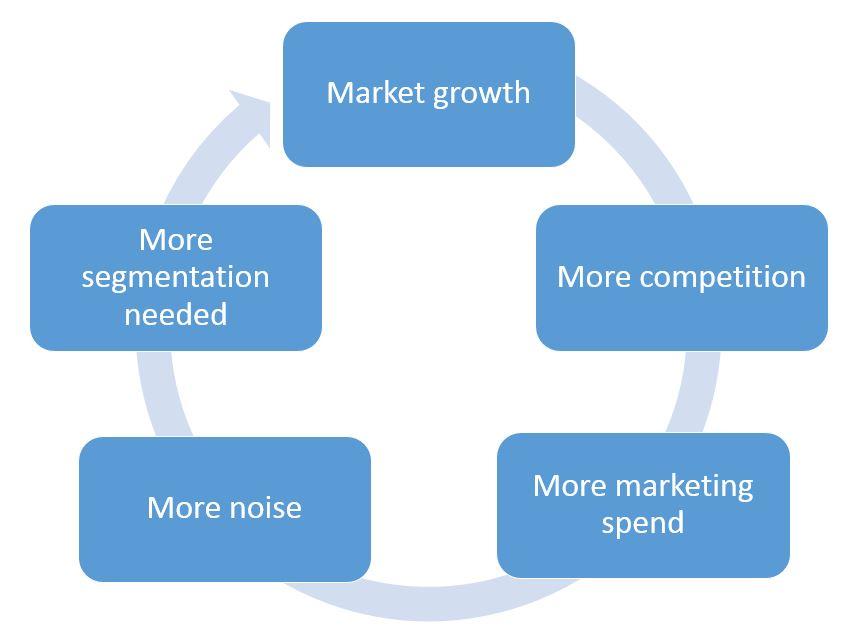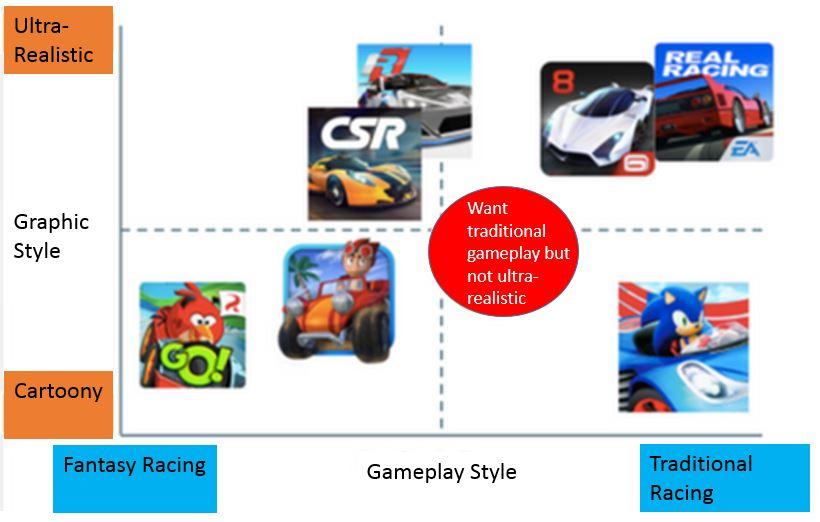
In Silicon Valley, it's often said that product is king. But if product is king, marketing is the queen and I’ve seen too many companies with great products fail miserably because of poor marketing. The problem is not the quality of their product videos, websites or apps but their inability to talk to the right people or tell those folks what they really need to hear.
As someone who has worked in start-ups and mentored start-up CEOs for over 10 years, I think that companies waste their marketing spend and ultimately bite the dust because they disregard segmenting, targeting and positioning.
To compete in today's highly competitive world of digital marketing, viral videos and social media, companies must master these basics, or what I call the STP framework.
What is STP?
S = Segmentation
To properly identify your target audience, you first have to segment your market. This involves breaking down your market into identifiable groups or target profiles. The key with segmentation is to choose the most relevant variables that matter to your target customer and, more importantly, to choose variables where you can compete and win.
For a business-to-consumer product, for example, these variables could be:
- Age
- Location (urban vs. rural, for example)
- Education
- Household income
- Another industry-specific variable (for example, for mobile phones it could be screen size or camera quality)
Segmentation matters because as markets grow, they become more competitive. At the beginning of any new market cycle, there are only a few players. However, once those few players begin to develop the market, capture consumers and build value, the market will attract new players who, in turn, will compete for these users. As new players enter, marketing costs increase and profitability per customer falls.

The goals and output of your segmentation work should be:
- Establish the criteria to segment the market.
- Divide the market into different groups and understand the size, value, growth and dynamics of each segment.
- Determine what is important to each market segment and understand which segments your competitors are after. This will help you identify their weaknesses and whether there is an opportunity for your business.
T = Targeting
Now that you've broken down your audience it's time to identify the best segment with unmet needs that you can serve.
When considering which target audience to focus on, keep in mind the following criteria:
- Is the target segment really underserved by what's already on the market? More importantly, is the pain point serious enough that consumers will be willing to pay for a solution?
- Is the target market large enough or growing fast enough to provide a sustainable stream of revenue? Can this target market be profitable?
- Does serving this audience align with your company's vision, mission and brand values?
- What kind of changes, if any, would you need to make to your product or service to serve this market? What are the costs of making these changes?
- What kind of organisational changes would you need to make to serve this market (e.g. hiring more salespeople, adding more customer support)? Can your company afford to make these changes?
- How well do you understand this target segment? What additional research would you need to do to market to them successfully? (Hopefully you would have done some of this research when segmenting your market.)
- How easy is it for competitors to pivot into this market? What are the barriers to entry and are they sustainable?
It's important to recall that target markets can change over time. Your target audience at the beginning of your company's journey might not be the same three to five years later. Here's one way to think about it:

In new markets, you should try to capture the largest customer base as possible and collect customer data. However, as the market matures, you must start to segment your market and focus your efforts. Initially, you might target based on certain demographic factors such as age and location, refining your approach as the market continues to evolve. In highly competitive markets, focus on building emotional connections with clients and try to make them feel a certain way as they use your product or service. The best brands have such a strong emotional bond with consumers that consumers don't even consider alternatives, even when they are significantly less expensive (think Apple, Nike, Coke and Amazon, for example).
Let’s take the example of Rovio, a Finnish mobile game creator, to illustrate the outcome of segmentation work and targeting. When Rovio decided to enter the highly competitive market of mobile racing games, it opted to capitalise on its Angry Birds franchise. Traditionally, mobile racing games have focused on graphics and gameplay (see the two axes in the illustration below).

The top players in the market used ultra-realistic graphics, included all the high-end car brands and featured complex and realistic gameplay. Instead, Rovio designed Angry Birds Go, a game that was cartoonish in nature, fun and true to its franchise. Aside from simpler controls, it also allowed users who owned Angry Birds figurines to “unlock” those characters in the game by placing those figurines in front of the phones' camera.
Whereas games like CSR and Real Racing went after the traditional core gamer (male, 18-24 years old, interested in graphics and realistic gameplay), Rovio focused on a younger demographic (8-13 years old) of male and female gamers who wanted something fun, simple and unique.
The results: On Android alone, Angry Birds Go has had over 50 million downloads to date, more than five times the number for EA's Real Racing and on par with the market leader, CSR Racing.
P = Positioning
The final piece of our framework is positioning. Once you've identified your target audience, you need to develop a positioning statement that will give consumers a compelling reason to try or buy your product.
Positioning is the art of creating a distinct impression in consumers' minds. According to Doug Stayman of Cornell University, the ideal positioning statement:
- Is simple, memorable and designed for your specific target audience.
- Presents a clear and unmistakable idea of your product.
- Is credible, i.e. it can deliver on the product’s promises.
- Is unique and “ownable”.
- Acts as a guidepost for future marketing programmes and products.
- Is open ended, i.e. it leaves room for growth and doesn't restrict options in the future.
Here are some famous positioning statements:
- Target: Style on a budget
- Volvo: For upscale American families, Volvo is the family automobile that offers the maximum safety
- Home Depot: The hardware department store for DIY fans
Don’t forget that a positioning statement can also cast your competition in a negative light while making your product appear superior. For example, "The Ultimate Driving Machine" not only puts BMW in the best light but it indirectly makes consumers think that competitors aren't as good.
If you’re a founder, CEO or head of marketing, you’ve never had better tools, nor more diverse channels to reach customers in a unique, personal and powerful way. But if you target the wrong consumers or just give them the wrong message, you'll do what many marketers sadly do today: Pour your marketing budget down the drain.
Patrick ‘Mad’ Mork (INSEAD MBA ‘00J) is an Executive Coach & Chief Storyteller at madmork stories. He is a former Google Play Chief Marketing Officer.
-
View Comments
-
Leave a Comment





No comments yet.